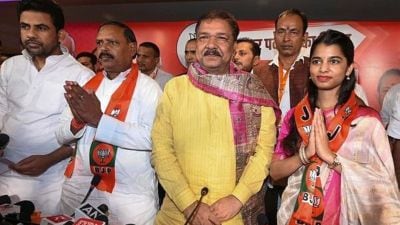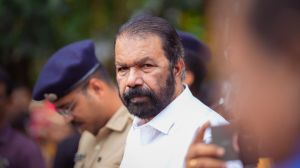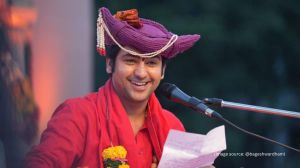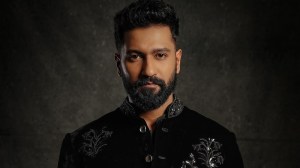Kerala indisposed
Kerala, which boasted high health indicators even comparable to developed countries, was recently confronted with a serious question: Sho...

Kerala, which boasted high health indicators even comparable to developed countries, was recently confronted with a serious question: Should private practice by government doctors be banned? The issue was triggered by the arrest of Dr P. Subramaniam, the head of Urology department at Medical College, Thiruvananthapuram, on charges of accepting Rs 400 as bribe from a patient’s relative.
The incident also left the CPM-led Left Democratic Front (LDF) Government frantically searching for a “forgotten file” containing the recommendations of the T.N. Jayachandran Committee which had called for a ban on private practice in a phased manner.
However, successive governments of both the fronts — the LDF and the Congress-led United Democratic Front (UDF) — had neither showed the political will to ban private practice nor came out with any alternate policy. In fact, they conveniently kept the issue under wraps and scuttled the possibility of a public debate on the issue.
As per the Kerala Government ServiceConduct Rules 1970, medical officers are prohibited from associating with private medical institutions even on an honorary capacity. They are permitted to treat patients at home after duty hours.
“We are in a vulnerable situation. Anybody can brand the consultation fees as a bribe and get you behind bars,” argued a doctor. There might be some black sheep in the profession but this did not merit the indicting of the entire medical fraternity.
However, the opponents of private practice said that Subramaniam’s case was just the tip of an iceberg. They pointed out that a large number of government doctors including urologists and nephrologists have fixed rates. And preference is given to the “paying” patient in hospitals at the cost of poor patients.
With private practice bringing good money in a state like Kerala, more and more doctors are jumping onto the the bandwagon — this adversely affects patient care and teaching in hospitals. Moreover, the high cost of medical education, running into lakhs,was also prompting doctors to go for private practice. “It’s a sort of recovery,” said a doctor.
However, votaries of private practice defend it. They argue that home consultation actually benefits the patient and reduce the rush in hospitals. They also point to the low salaries of government doctors in the state.
Kerala Government Medical College Teachers Association (KGMCTA), the premier body of medical college doctors, has been in the forefront demanding a hike in salary. Even the Jayachandran Committee had endorsed the demand as a prerequisite for enforcing a ban on private practice.
While it favoured pay scales for medical college doctors on par with Regional Cancer Centre (RCC), for the doctors working in the health services it had suggested central pay scales.
The fact is: a majority of the competent doctors do not want to join government services because of poor salary and service conditions. A fact evident from the large number of vacancies in the government hospitals. Of the 800 assistantsurgeons selected through Public Service Commission in 1996 only 500 have joined till date. In ESI hospitals, 200 of the 550 posts have been lying vacant for long.
While the government health sector had been adversely affected by these handicaps, the private sector had made rapid strides. While the number of private doctors in the state was close to 6,400, the doctors’ strength in government medical colleges and health services was about 1,800 and 3,500 respectively.
Hospital bed strength in nearly 4,300 private allopathic medical institutions in the state had gone up from 49,000 to 67,500 registering a 40 per cent increase in the last decade.
On the other hand, the increase in government sector had been marginal from 36,000 to 38,000. A recent study revealed that the private hospitals also had a wider network in rural areas compared to their government counterparts, having a larger proportion of the utilisation of health services.
In spite of levying high charges, the number of patients coming toprivate hospitals had recorded a considerable increase which is reflected in the the steady increase in their turnover.
Notwithstanding the handicaps, the government health care infrastructure had facilitated greater access to the health services. From 230 allopathic health institutions with 6,752 beds in the first Five Year Plan, the number of medical institutions and their bed strength had risen to 1,310 and 43,165 respectively in 1996-97.
During the 35-year period of 1961-97, more than 30,000 beds were added in the state. Since a majority of the patients coming to the government health care sector belong to low income group or very poor sections, the government is hesitant to impose user charges.
With the health care budget not sufficient to meet the requirements, the facilities in five general hospitals, 11 district hospitals, 42 taluk hospitals, 69 intermediary hospitals, eight women and children hospitals and five medical college hospitals remain inadequate.
The prestigious RCC had recentlybanned private practice by its doctors. Another autonomous centre of excellence, the Sree Chitra Thirunal Institute of Medical Science and Technology (SCTIMST) had never allowed it. There could be a cue here for the State Government as well — for its medical college hospitals followed by district and taluk level government hospitals.



- 01
- 02
- 03
- 04
- 05




























